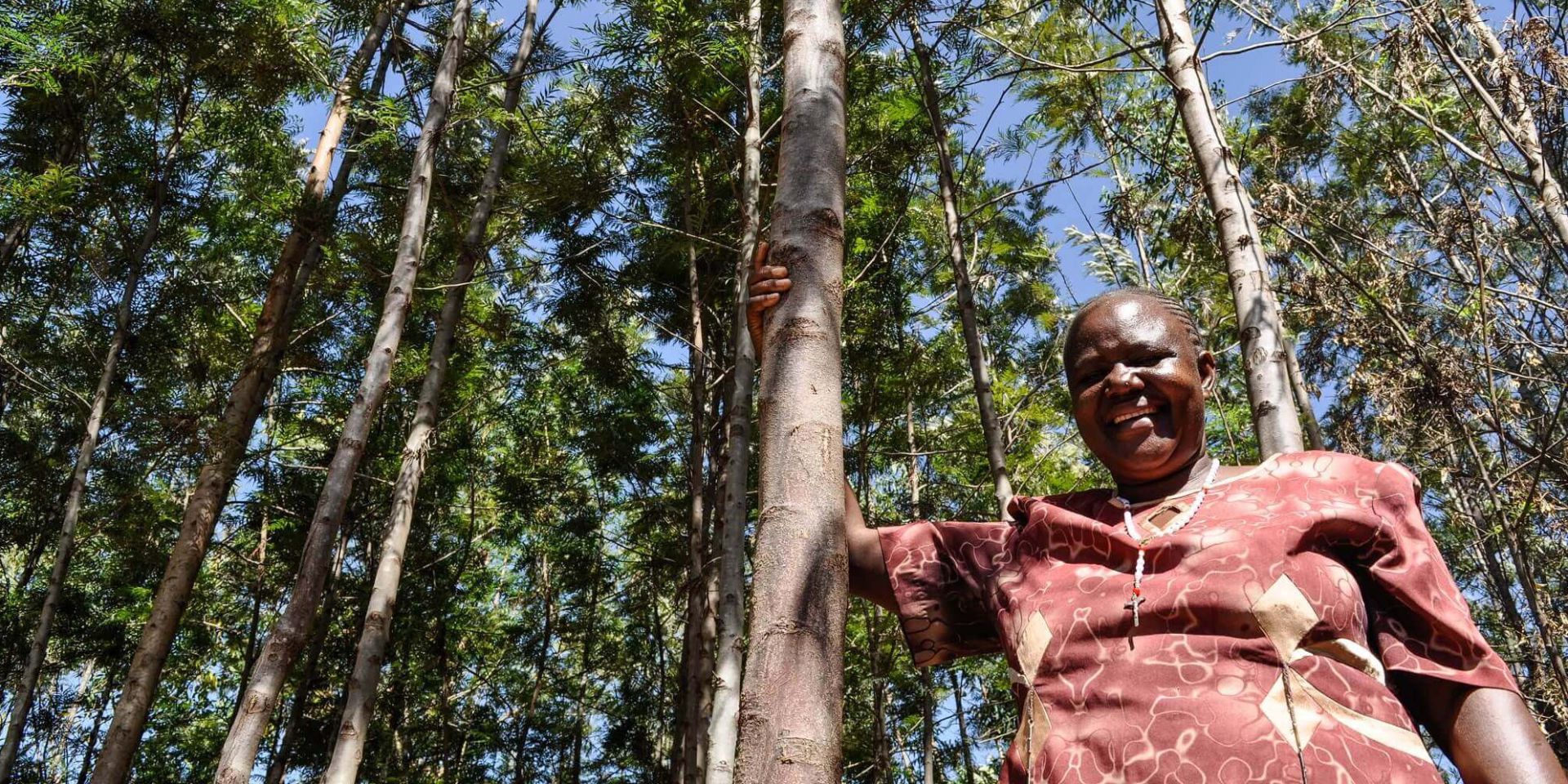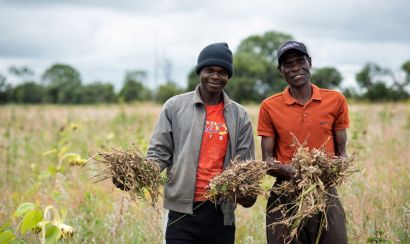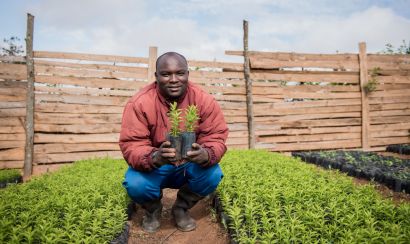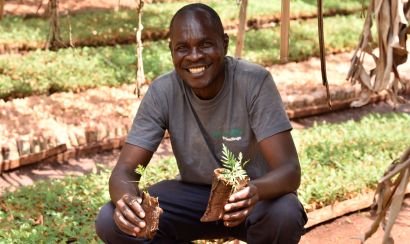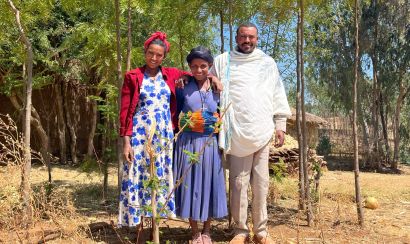Why Smallholder Farmers Should be Front and Centre of Discussions at COP26
We are a week into COP 26 and the world is negotiating critical targets to decarbonize our economy. And while these high-level discussions are vital, they often ignore an important group who are already feeling the worst effects of climate change: smallholder farmers.
As one of the leading organizations serving smallholder farmers, One Acre Fund is already seeing how climate change threatens the livelihoods of 1.4 million vulnerable client families. In response we are deploying an ambitious portfolio of projects to support both mitigation and adaptation, tapping into new carbon revenues and anchored by a goal to plant 1 billion trees with farmers over the next 10 years.
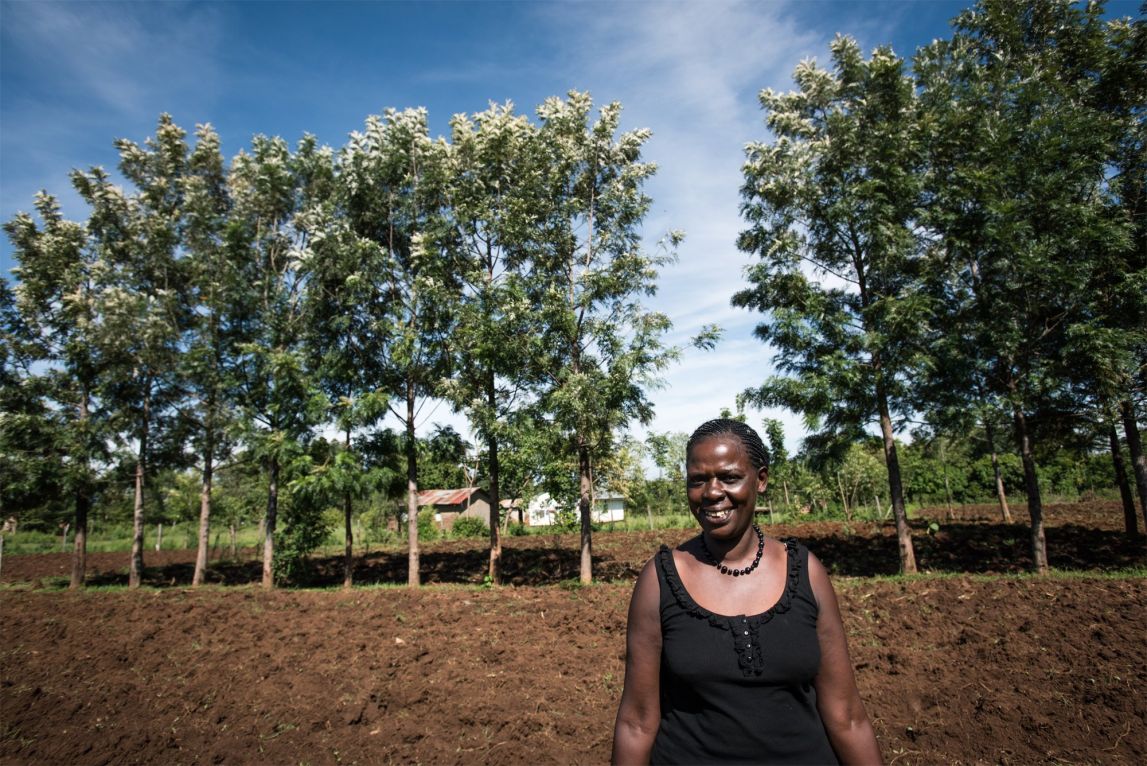
How Climate Change Hurts Farmers
Only 3% of climate finance goes to agriculture, and even less to smallholders. In Sub-Saharan Africa, more than 50 million families earn a living from small farms, which produce 80% of the African continent’s food. Meanwhile their harvests are suffering from climate change, adding to a long list of challenges including a chronic lack of access to inputs, finance, and structured markets.
Most smallholders rely on seasonal rains. As weather patterns continue to shift, we have seen farmers increasingly lose harvests to catastrophic deluge and droughts, leaving them to reconcile financial losses from the costs they paid upfront to plant, and without food for their families. In addition to increasing water stress, climate change is impacting soil fertility. Under a 2 degree warming scenario, average yields of staple crops in East Africa, such as maize, are predicted to decline by up to 40%, indicating that farmers will struggle to make a living from arable crops even with significant support.
When smallholder farmers can no longer farm their land and feed their communities or themselves, they often migrate. Increasingly, the World Food Programme is feeding “climate refugees”, and the UNHCR estimates that there are 21 million new climate refugees since 2010.
Countries with high numbers of smallholder farmers in climate stressed agro ecological zones are importing more food than ever before, putting a strain on already overstretched trade deficits and foreign exchange reserves. These imbalances will only grow as the need to feed a growing population will require food supply to increase by 30%.
These challenges are now well known across the globe, but what does this experience look like for a smallholder farmer? Rosemary Wanyama, a farmer in Kenya, had been steadily increasing her harvests from 1 bag of maize per half acre to an average of 5 bags since she began farming with One Acre Fund in 2014. In 2018 drought hit. Rosemary lost her entire maize crop. “I have never seen anything like this. Parents would talk about a year in the past when it was dry, but I never asked them about it. It’s been raining very well over the years.
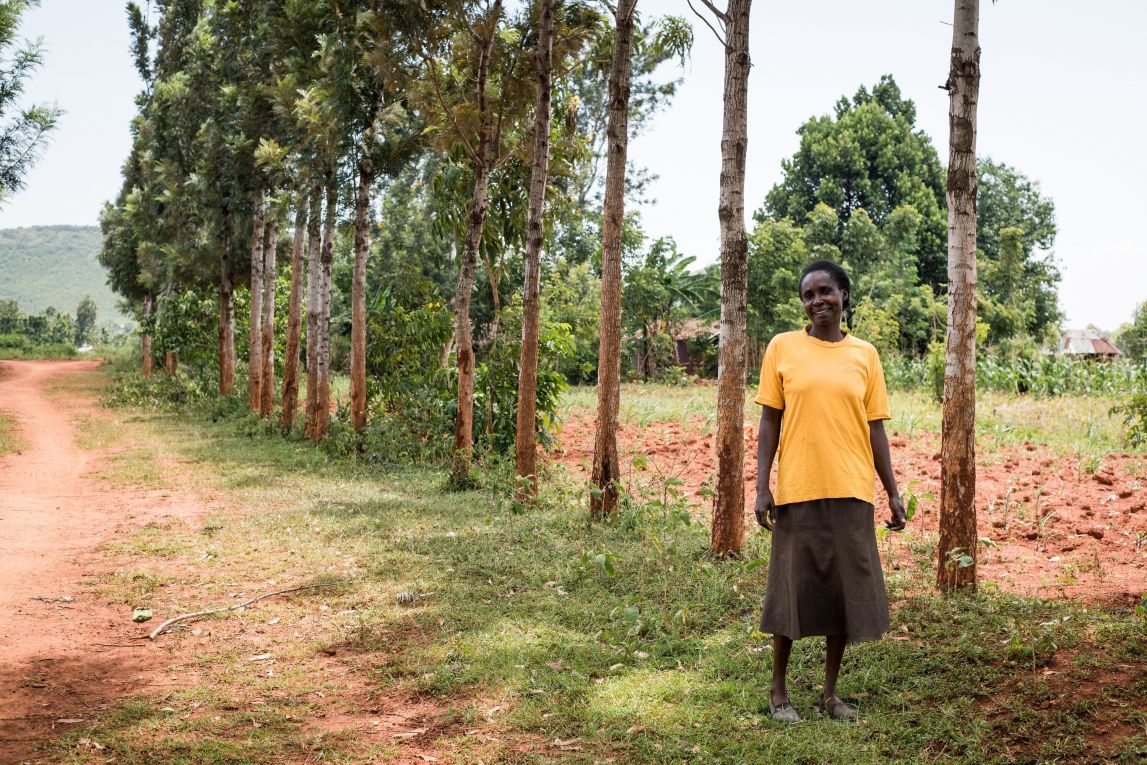
This year things drastically changed. I am hopeful that next year it will rain,” Rosemary says. In future seasons Rosemary also plans to plant more trees as an alternative income stream to protect from maize losses.
The Challenge
Smallholders like Rosemary are some of the least responsible for climate change, but are already experiencing the worst impacts and having to take financial risks to adapt. This is why we need a new deal for smallholder farmers, one that grows their incomes and protects food systems, while elevating them as stewards of the land in a changing climate.
Over the past 15 years One Acre Fund has supplied farmers with everything they need to grow more food and earn more money. Most farmers in Sub-Saharan Africa live in just eight countries -- Nigeria, Ethiopia, and the six countries of the Lake Victoria basin -- and we operate in all of them.
In a year with stable weather, farmers with more productive farms can feed their families and sell any surplus. They can plant valuable crops and build assets over time. With more income, farmers can invest in their children’s education and build businesses in their communities. To ensure farmers are protected against catastrophic losses due to climate events we ensure that all farmers have yield or weather index-based insurance, but climate change is making it harder to support farmers to grow more food and earn better incomes - so we must do more.
That is why we aim to plant 1 billion trees with farmers over the next decade - a vital contribution to the world’s decarbonization. Trees are one of the most powerful carbon capture technologies in the world. For example, a single grevillea robusta tree, the most planted tree in One Acre Fund’s tree program, is expected to accumulate 227 kg of carbon over a 30-year period. Now multiply that carbon sequestration potential by 1 billion!
Climate Solutions for Smallholders
Beyond decreasing carbon in our atmosphere, trees provide additional adaptation and farming benefits, which depending on the species can include: soil health improvement, alternative crop revenue (e.g. from avocados and macadamia), feed fodder for livestock, soil erosion reduction, and sustainable timber revenues.
The next phase of our 1 billion tree agroforestry programme will be to trial various ways to pay farmers for the service of carbon capture through trees - increasing their earnings potential not just as food producers, but as stewards of the land.
These revenues could be vital to improve the financial resilience of farmers and could provide incentives for farmers to keep trees in the ground for longer. To make this possible we are currently exploring how to tap into complex global financial structures, such as voluntary carbon markets. This requires certification of carbon through established standards programs. To support these global standards One Acre Fund will develop new ways for our field teams to monitor trees and link them to individual farmers so farmers can be paid for each tree they keep in the ground, no matter how small their plot might be.
On top of financial and field innovations, we will test the rapidly improving capabilities of remote sensing platforms (monitoring from space) to provide low-cost, hyper-localised monitoring. These platforms are well designed for commercial contexts, e.g. commercial farmers with larger land holdings and/or forest conservation, but through partnerships, we hope to adapt them for the smallholder farmer context. Should these carbon finance pilots prove successful, we will explore ways to use the same methodology for soil carbon capture - an exciting frontier in the fight against climate change.
To be sure, the scale of the climate change dilema requires collective action on all levels of our global systems, including at COP26. In navigating this complexity, let’s not forget the world’s smallholder farmers who are some of the least responsible for causing climate change, some of the most vulnerable to it, but could also be some of the most innovative pioneers in leading towards a more climate resilient future.
